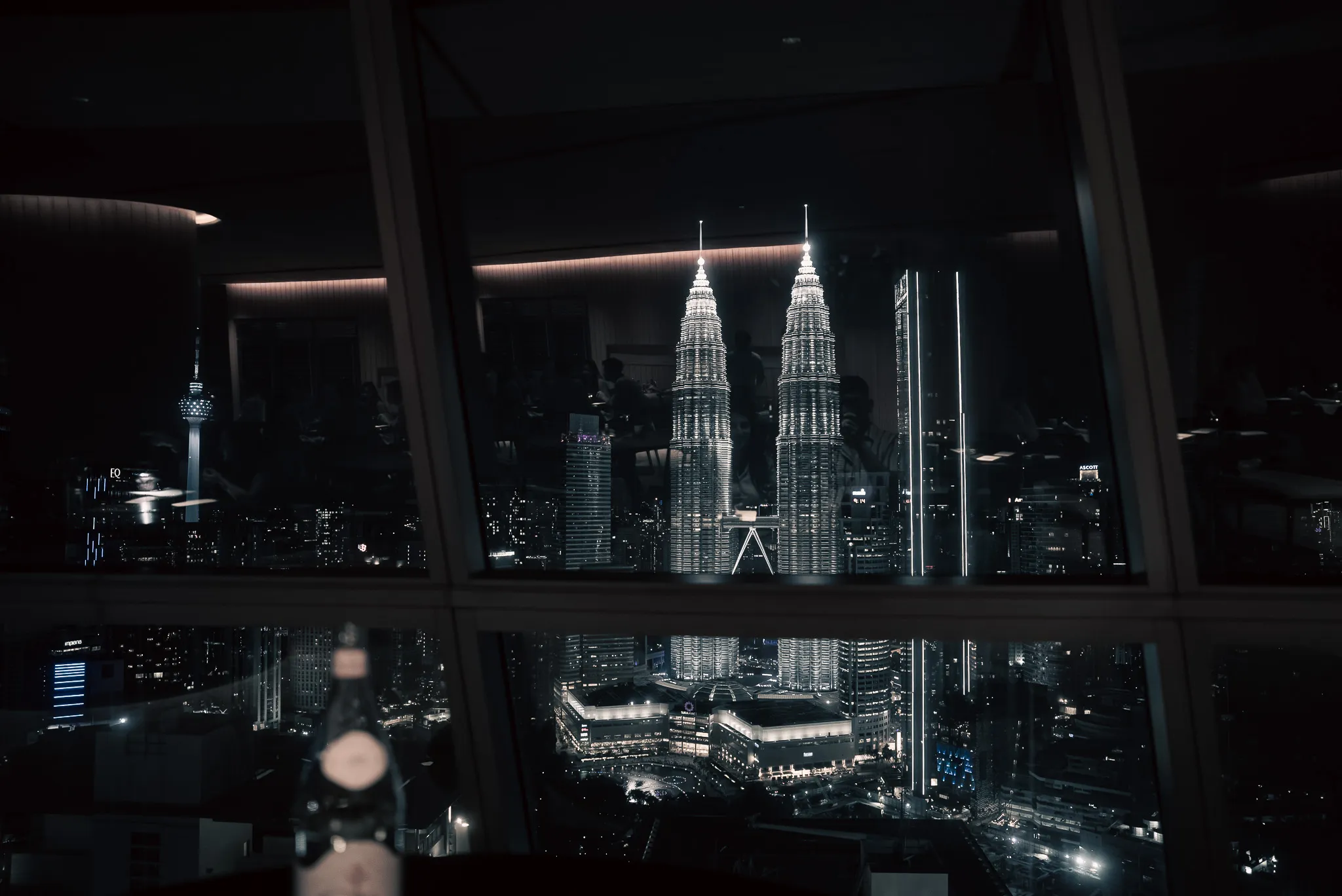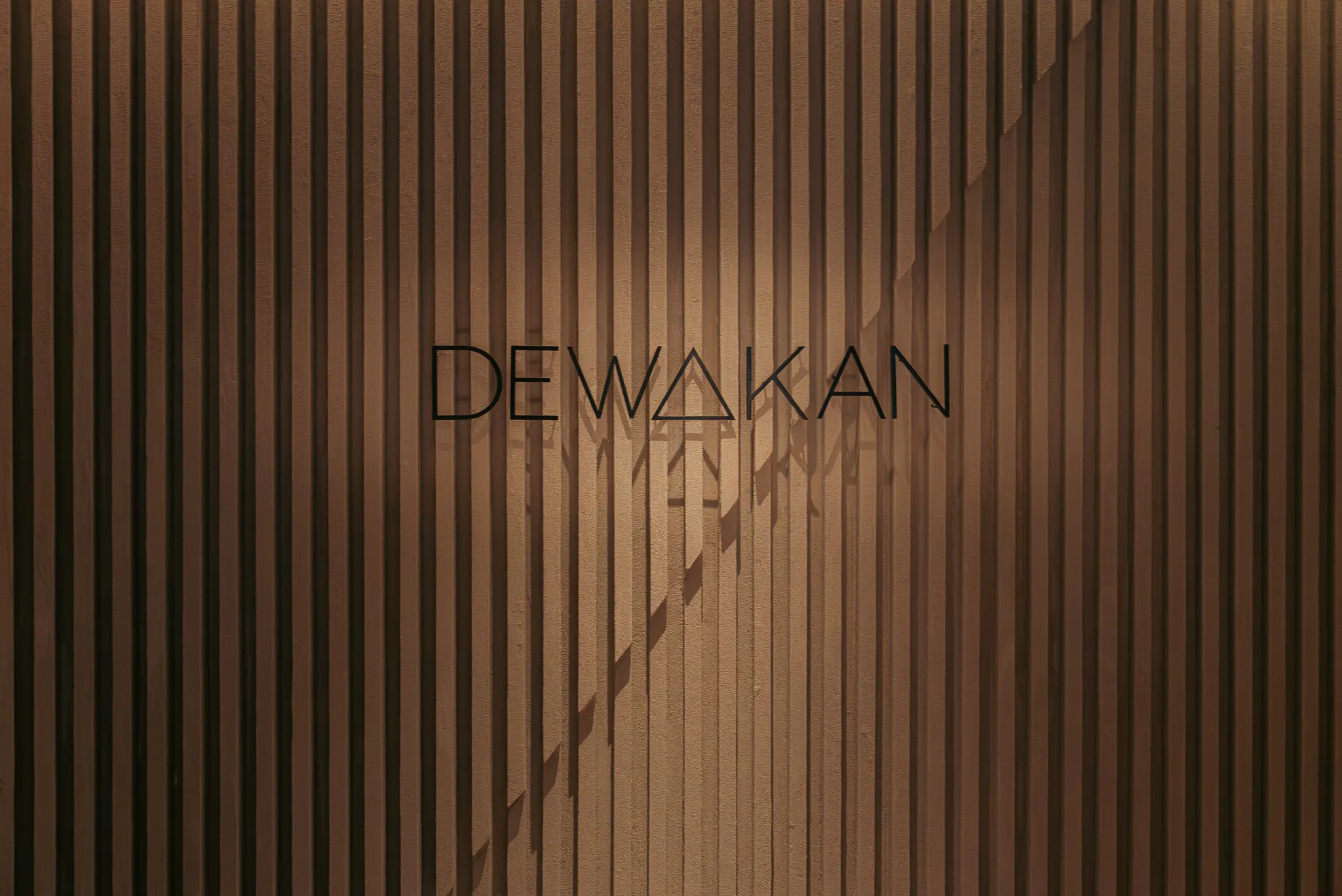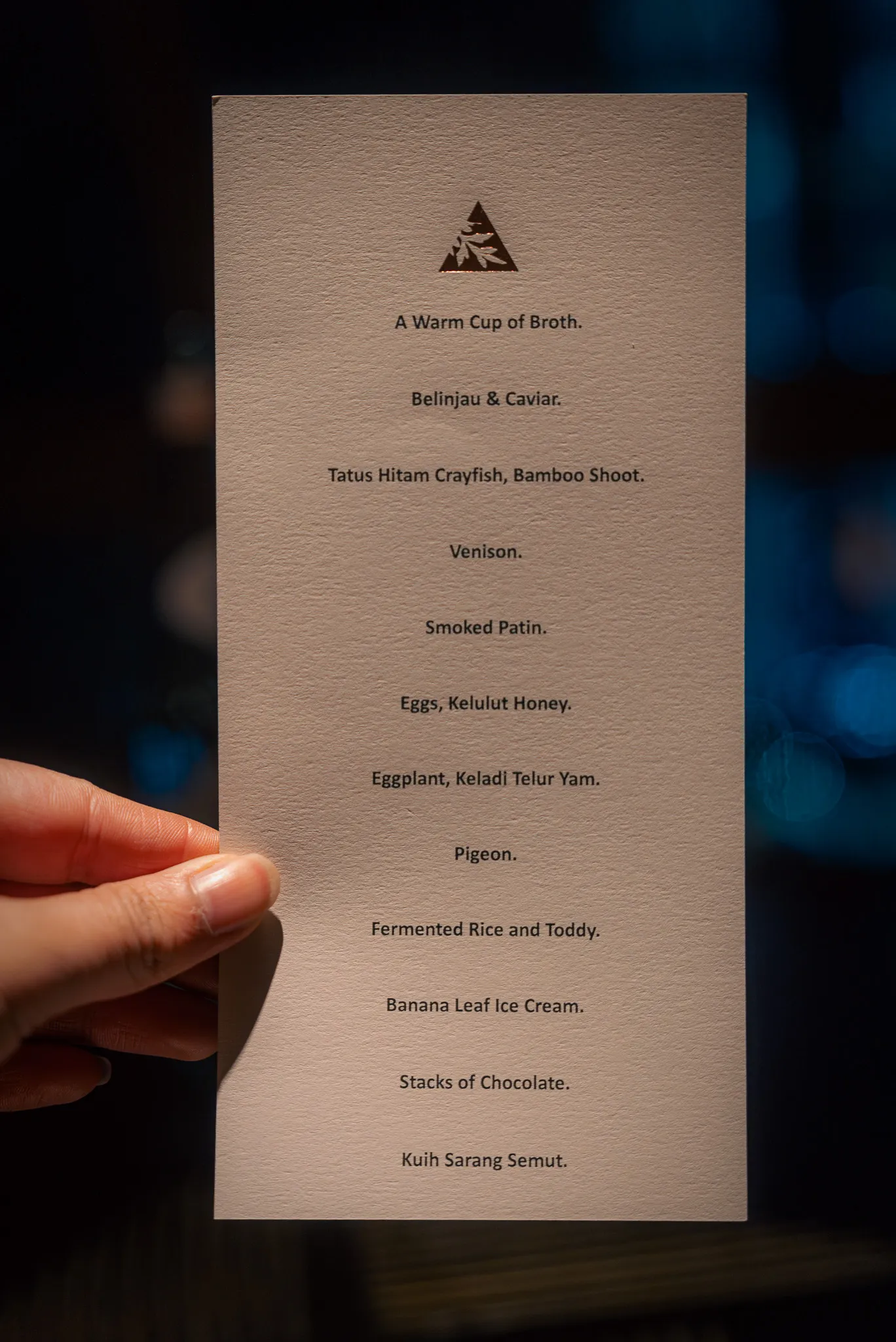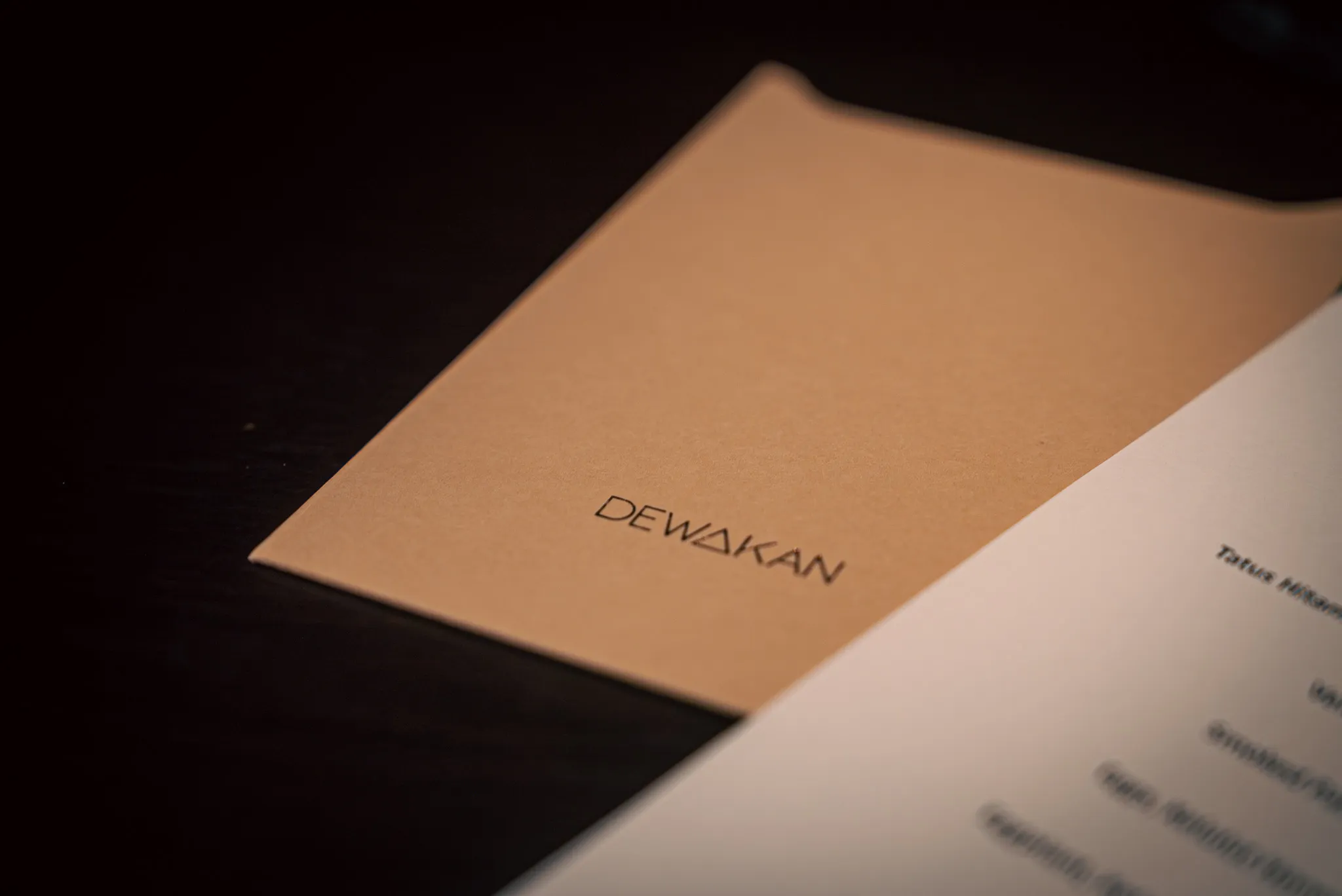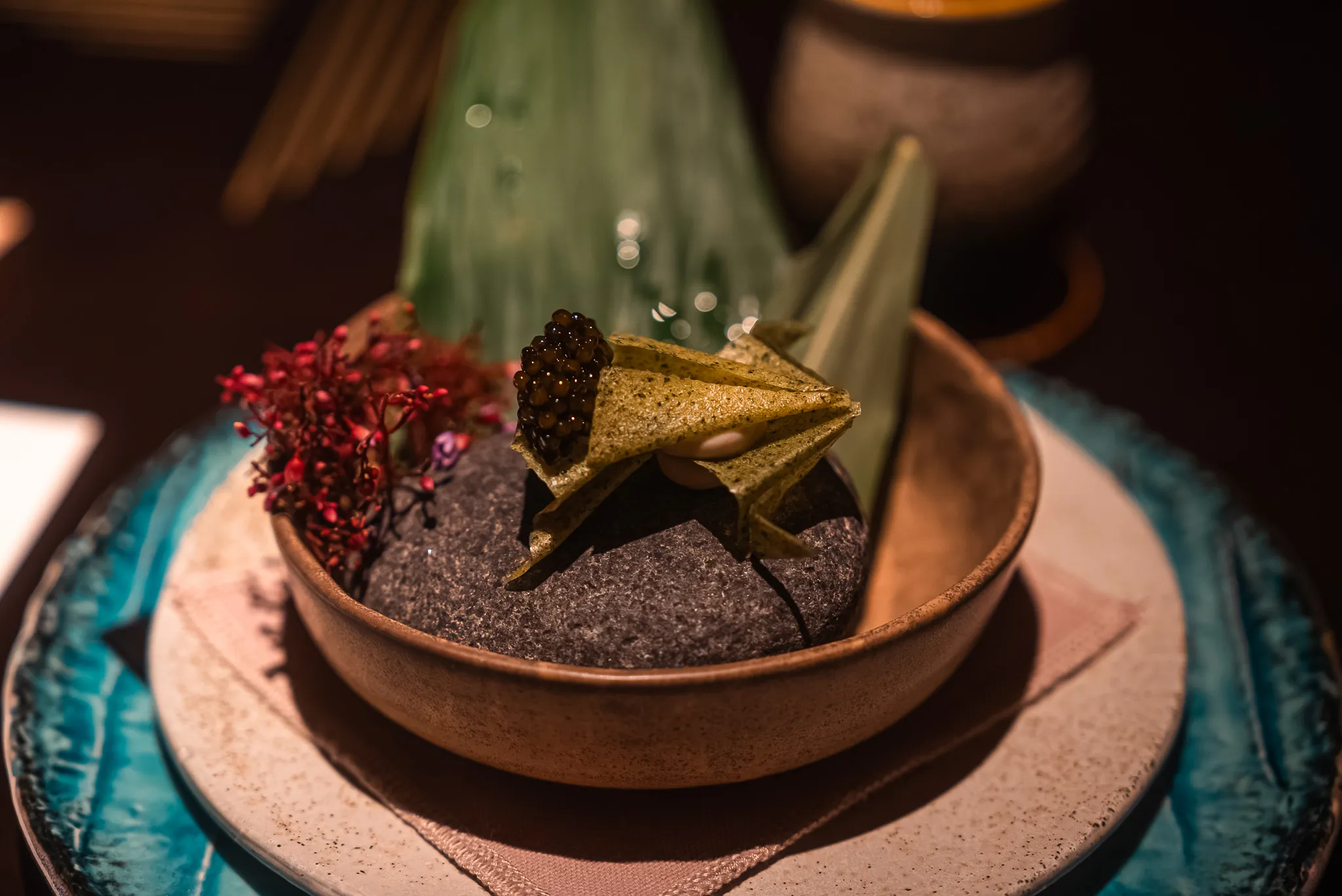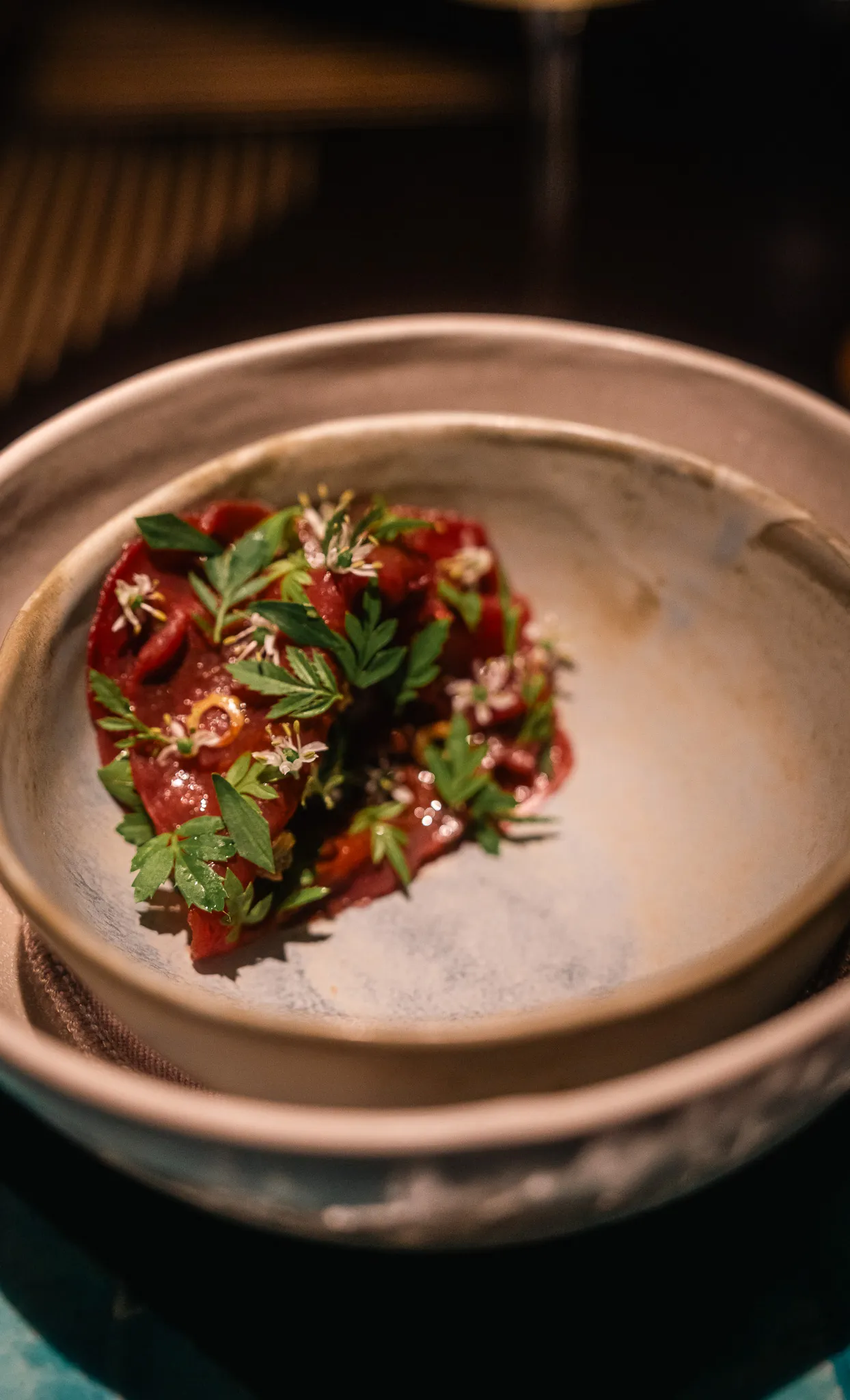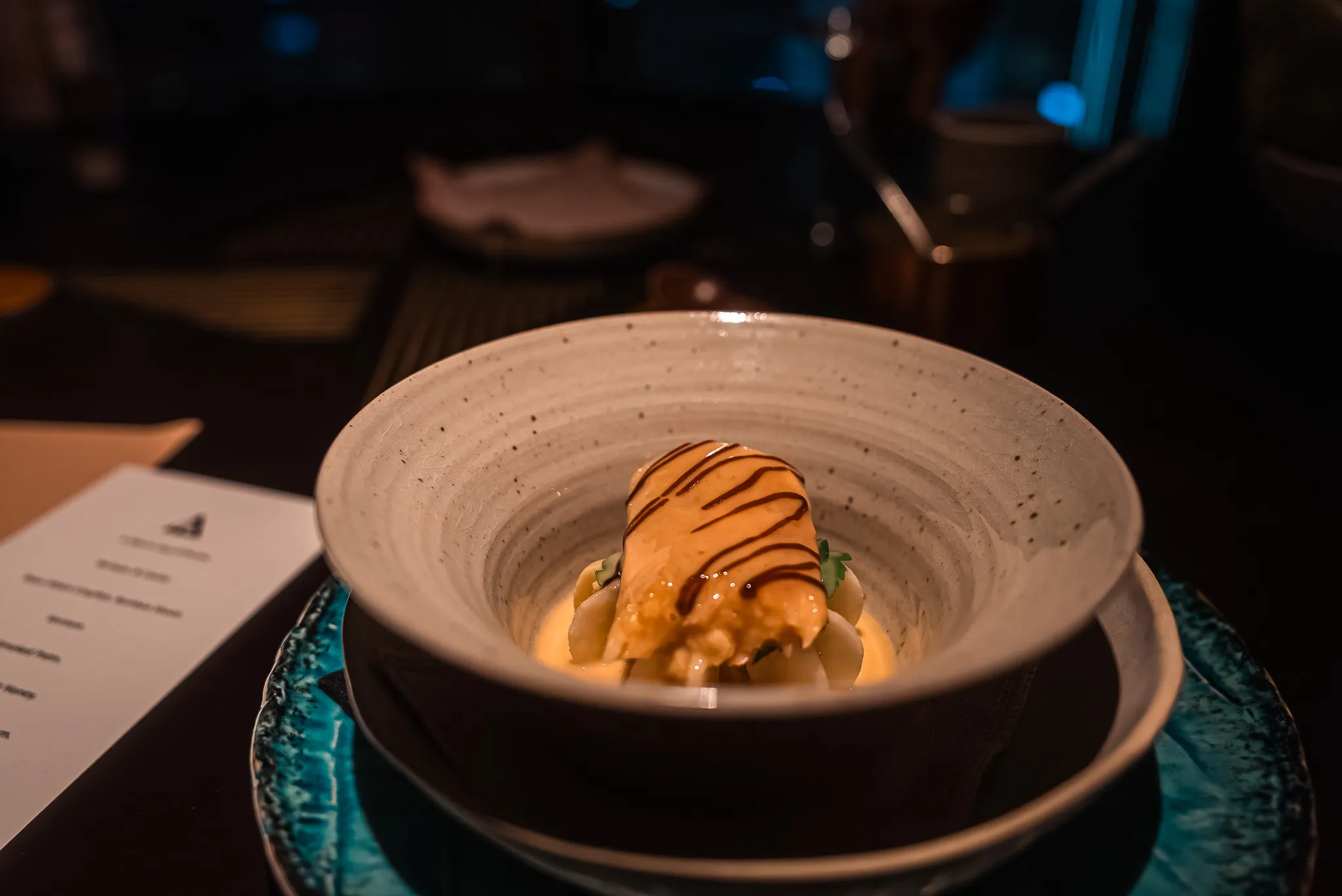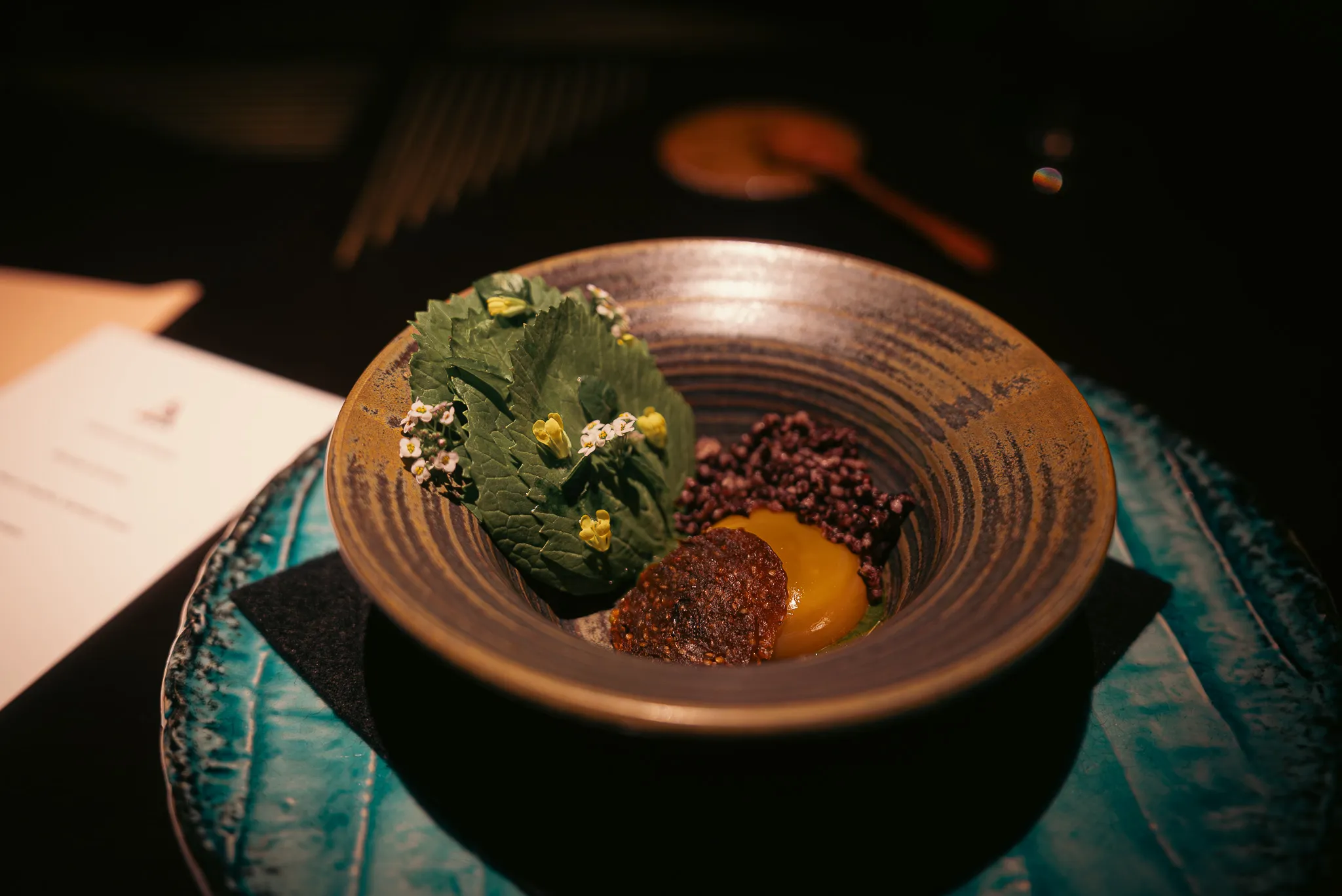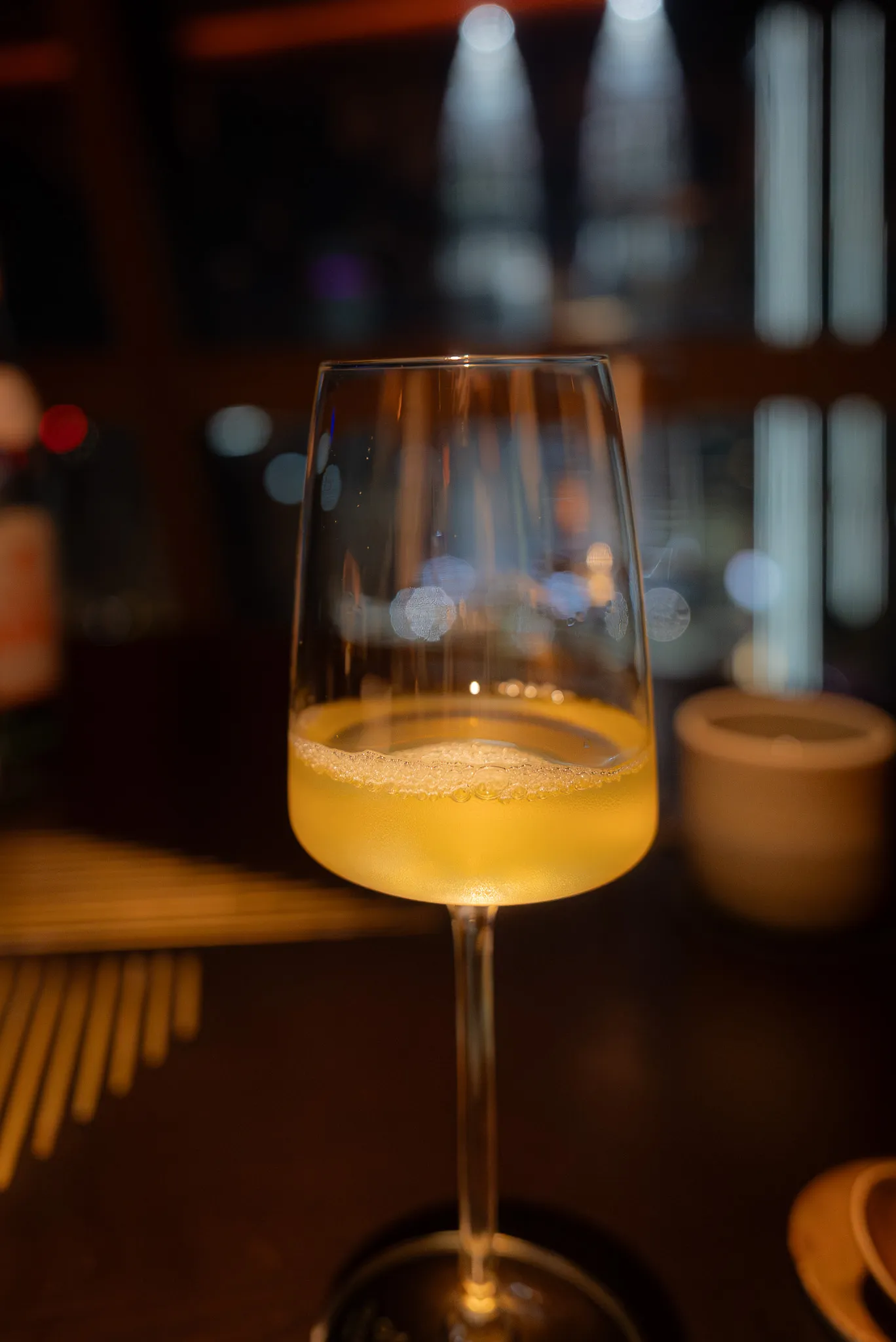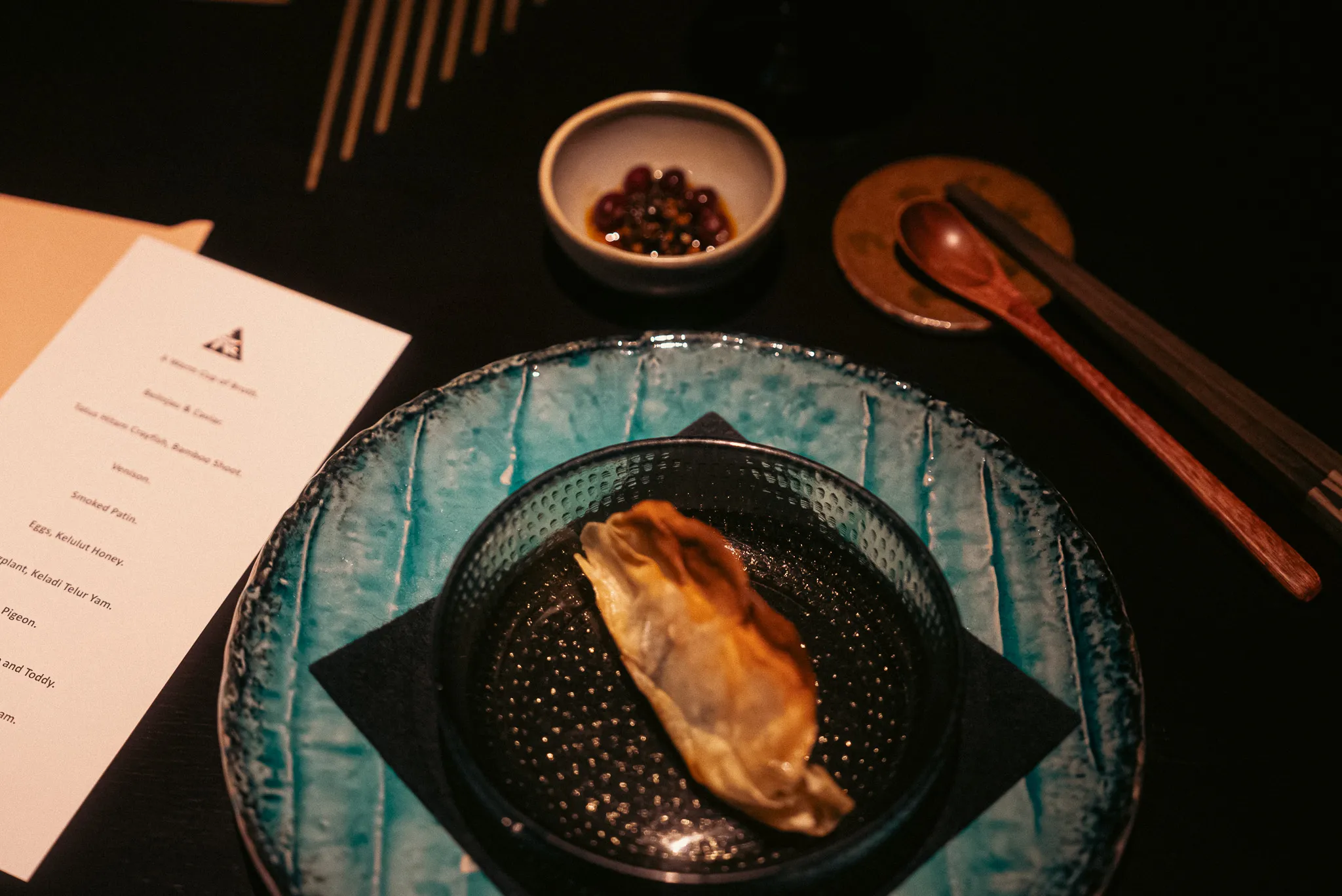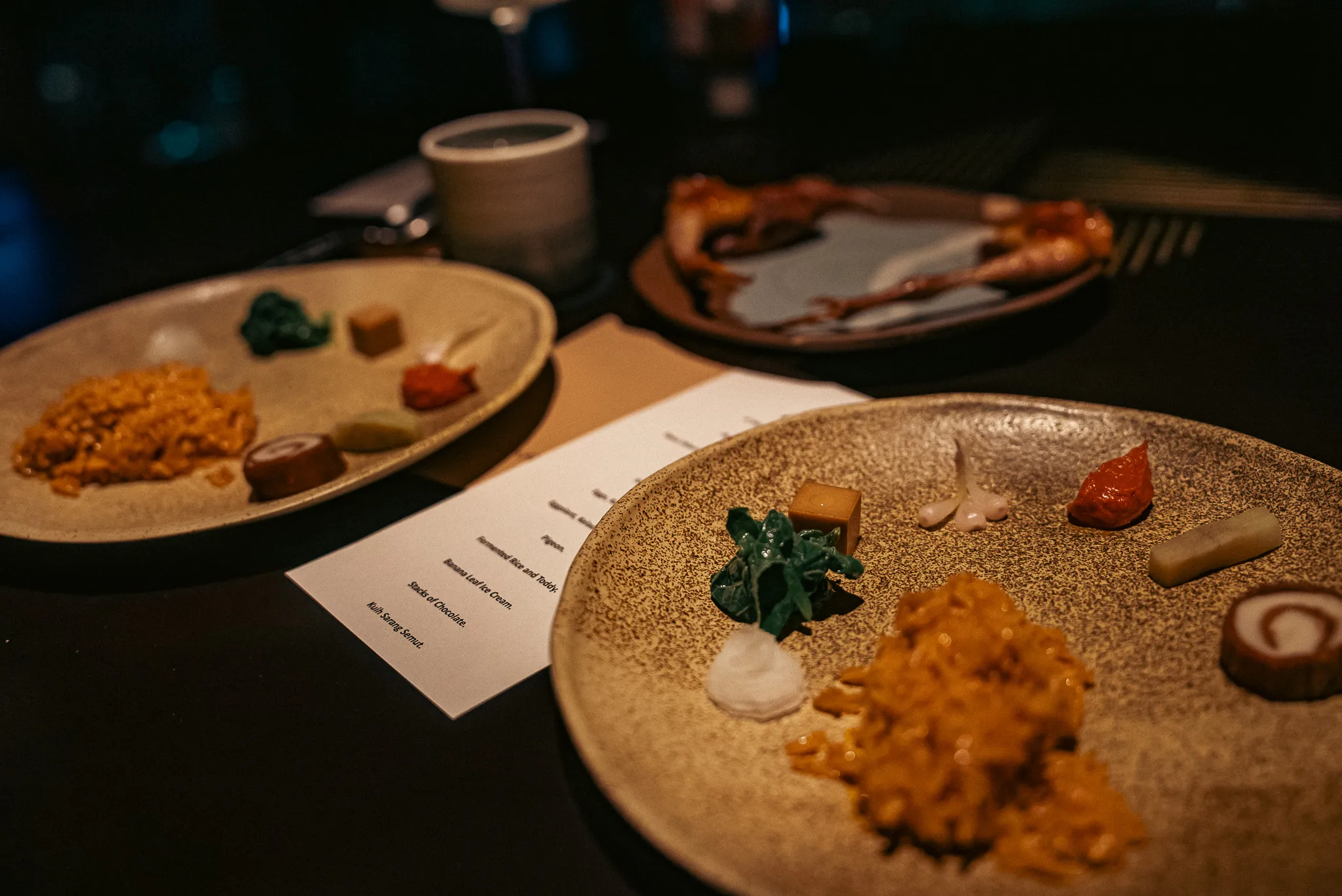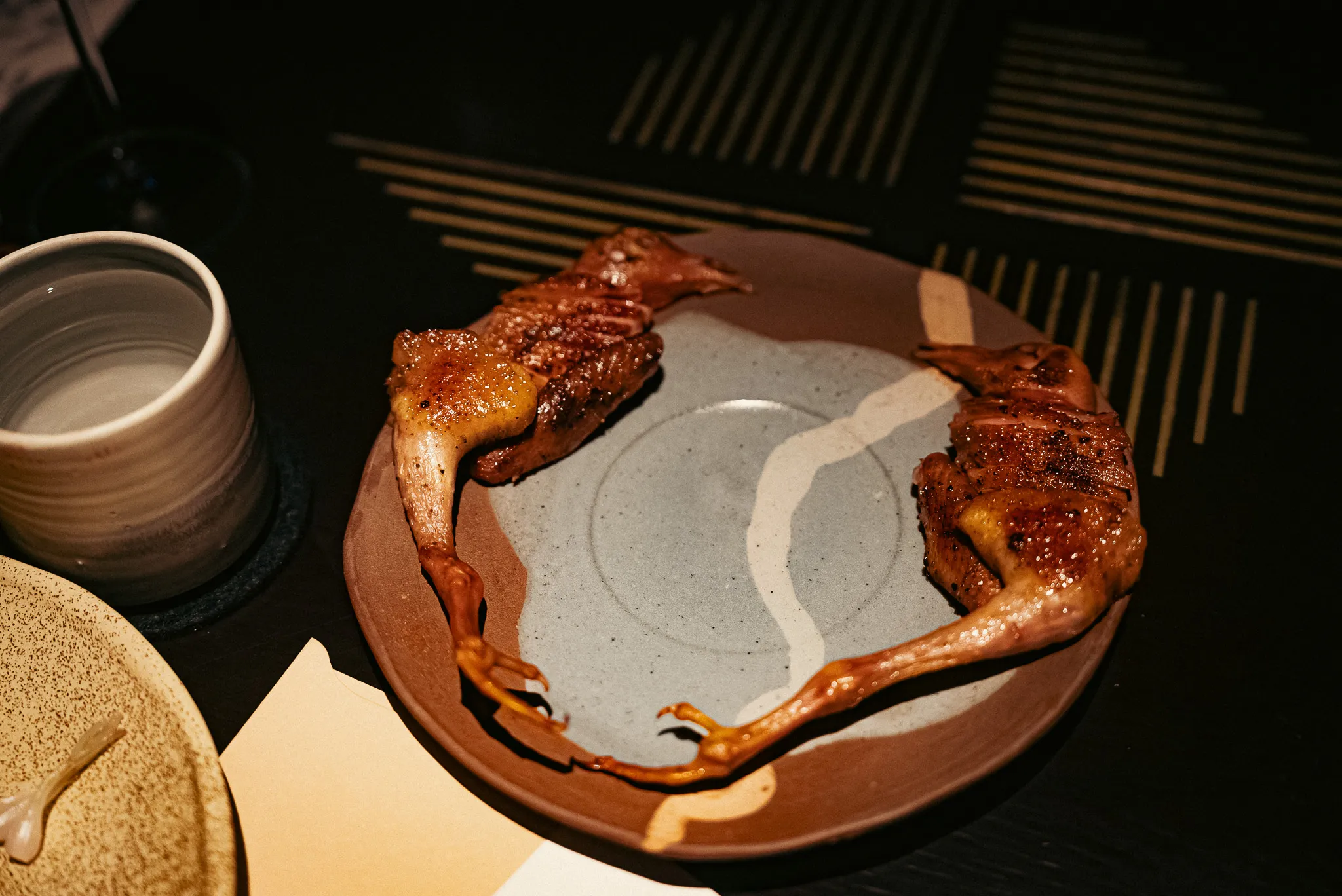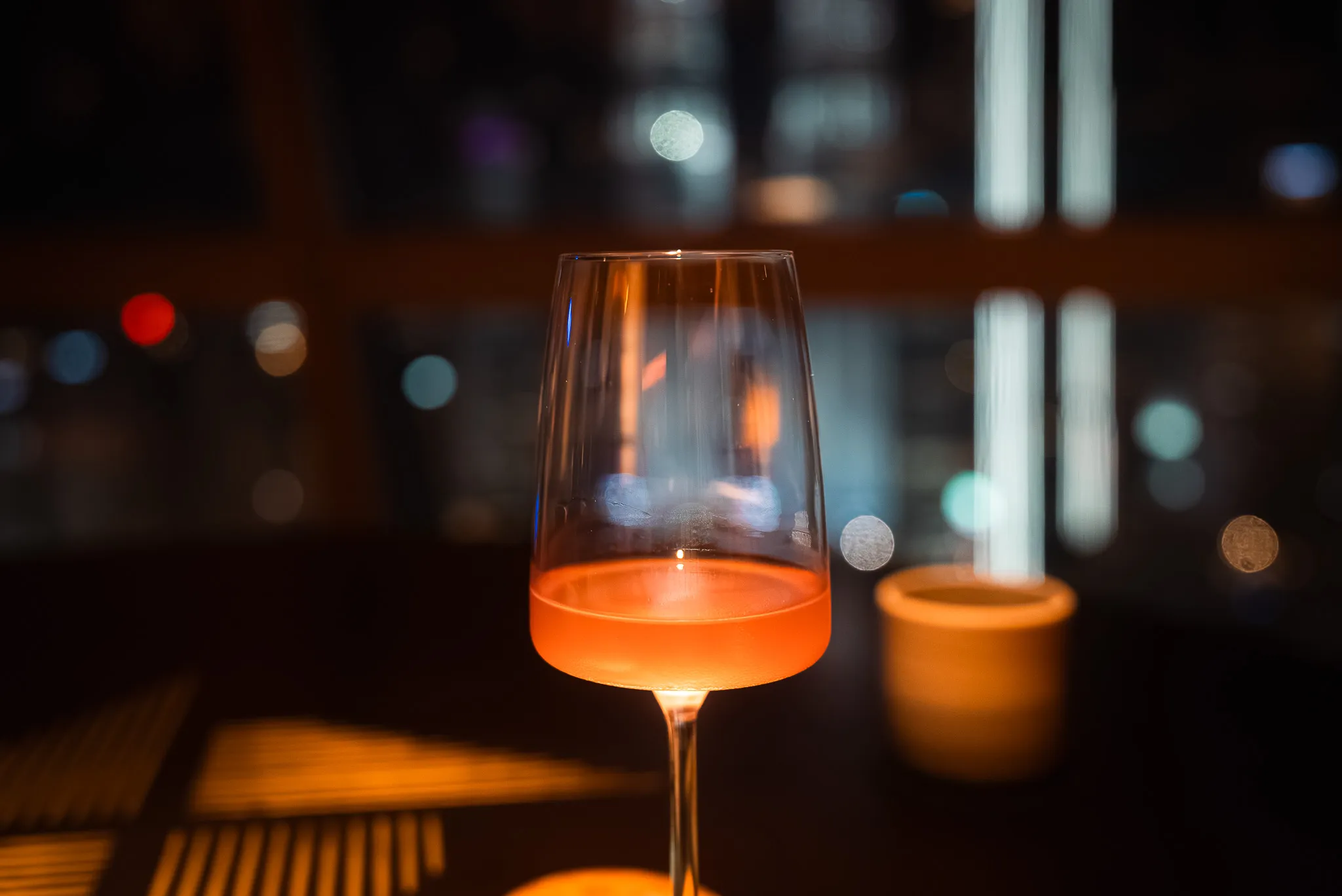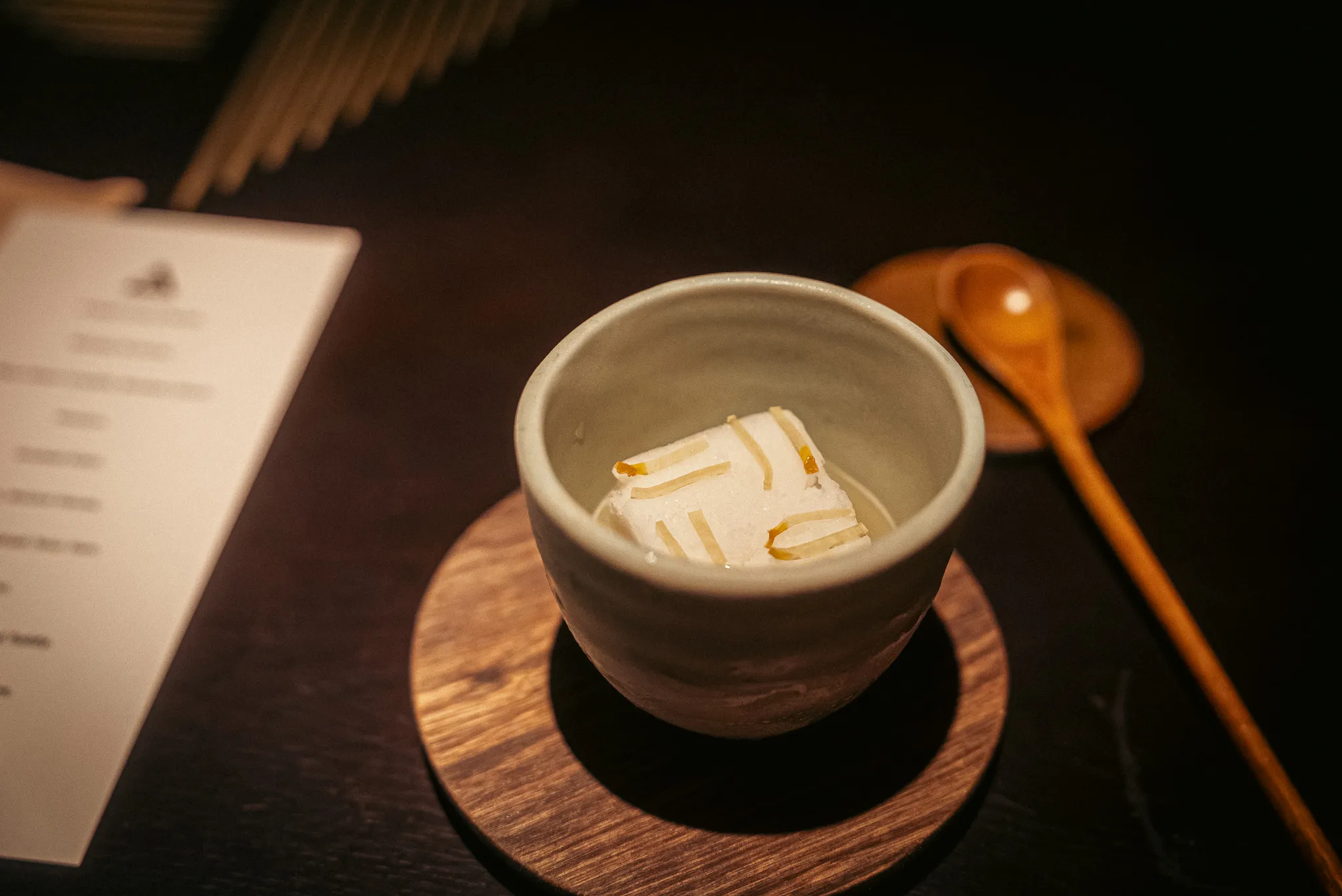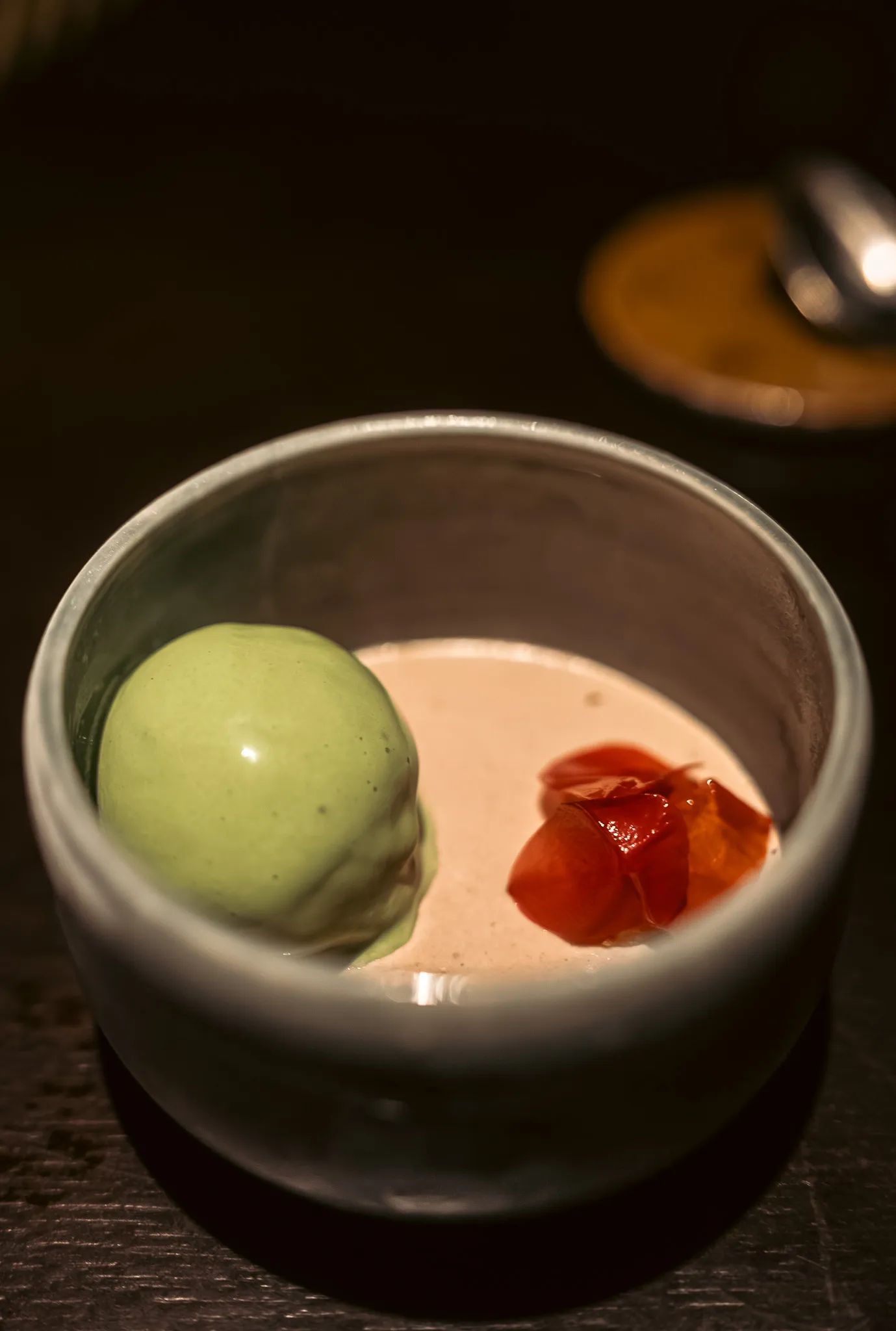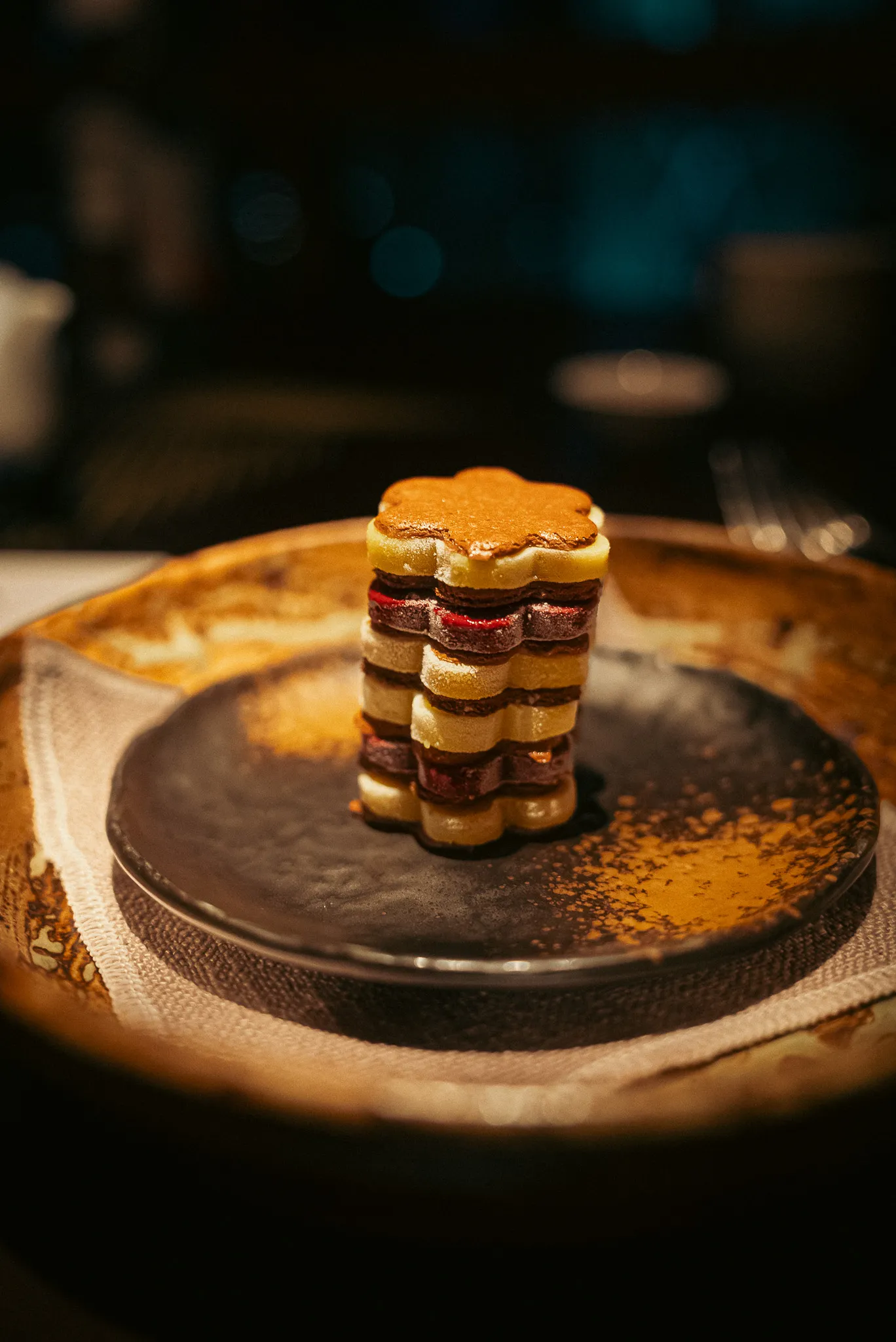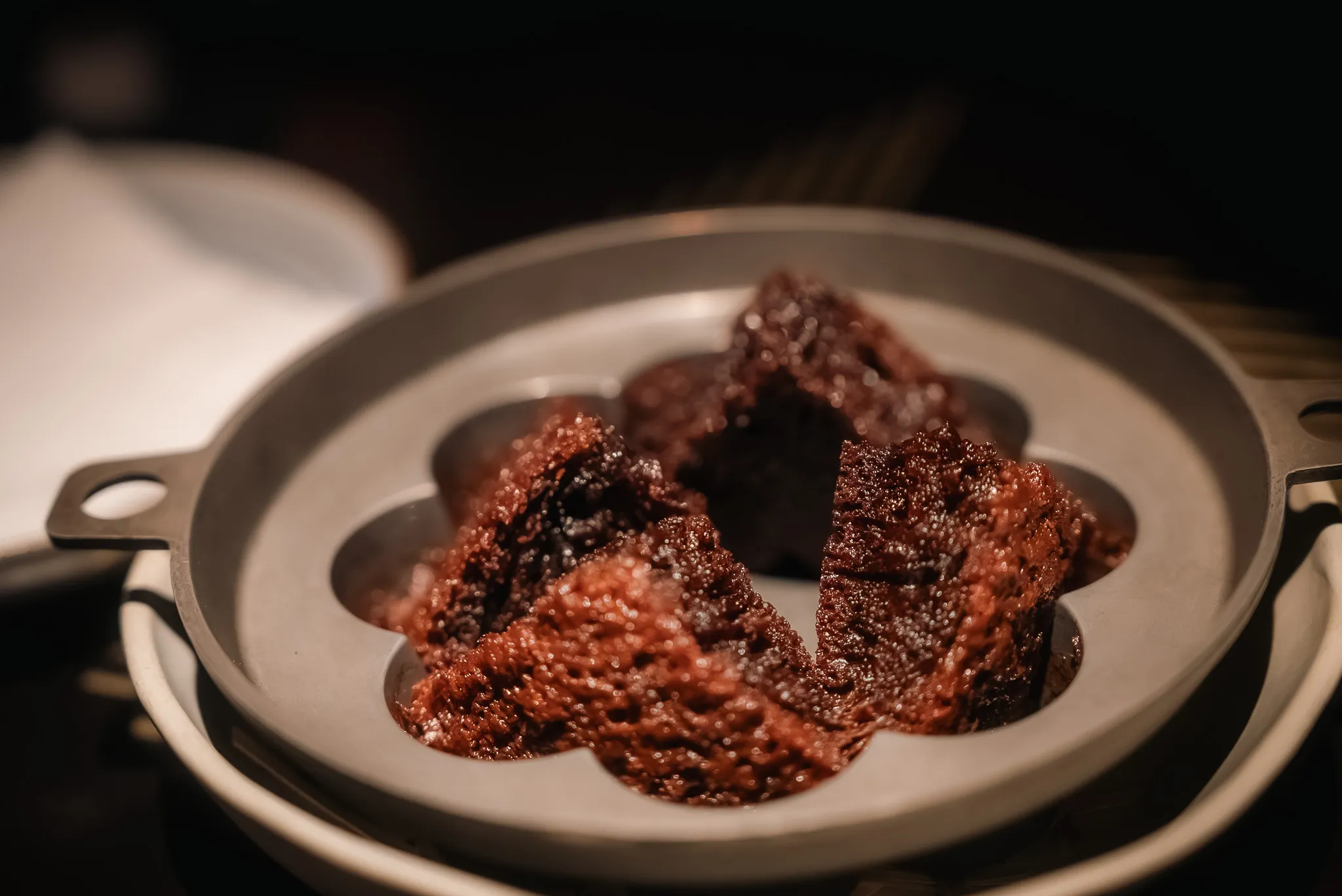Dewakan Experience | Michelin Star Dining in Kuala Lumpur
Where Malaysian Flavors Get a Michelin-Star Makeover
Author: Shariff Mazlan | January 28th, 2025
Prepare to delve into the world of Dewakan, a culinary trailblazer situated high above the bustling streets of Kuala Lumpur on the 48th floor of Naza Tower. This isn’t just any restaurant; Dewakan, a name ingeniously derived from the Malay words for “god” and “food,” has earned its place as a pioneer of modern Malaysian cuisine, consistently ranking among Asia’s 50 Best Restaurants since its groundbreaking entry at #46 in 2019 and maintaining its position at #50 in both 2022 and 2023. Further cementing its prestige, Dewakan was also awarded a coveted Michelin Star in the inaugural 2023 Michelin Guide for Kuala Lumpur & Penang, one of only four restaurants to achieve this distinction. Helmed by the visionary Chef Darren Teoh, Dewakan is renowned for its audacious approach to fine dining, meticulously crafting tasting menus that celebrate the often-overlooked indigenous ingredients of Malaysia. From the depths of the rainforest to the remote villages, Chef Teoh and his team source unique produce, such as buah keluak, kulim, and tuhau, transforming them with modern techniques into culinary masterpieces. This dedication to showcasing the country’s rich biodiversity, coupled with an elegant ambiance and breathtaking skyline views, promises a dining experience that transcends mere sustenance, offering a profound exploration of Malaysia’s gastronomic heritage. Get ready to discover why Dewakan is not just a meal, but a journey into the soul of Malaysian cuisine as we go into detail of our dining experience.

How to Get There / Modes of Transportation
Address: Level 48, Skyviews, Naza Tower Platinum Park, No. 10, Persiaran KLCC, 50088 Kuala Lumpur, Malaysia.
Dewakan is nestled on the 48th floor of the Naza Tower, which is situated near the iconic KLCC Petronas Towers, a 4 minute car ride, and about a 15 minute walk. We were staying at the W Hotel on the other side of KLCC, so we simply called a Grab, which whisked us there in about eight minutes. It was a smooth and easy ride. For those staying elsewhere and potentially looking into other modes of transportation, we got you covered. Here’s the lowdown on your transport options:
- By Car (Driving/Ride-Hailing):
Honestly, this is probably the most convenient way to arrive, especially if you’re not a seasoned pro with KL’s public transport.
Driving Yourself? No problem! Just punch “Dewakan” or “Naza Tower Platinum Park” into your trusty navigation app (Google Maps or Waze are your best bets). Naza Tower has its own parking garage, so you can park your car there, but be prepared to pay those parking fees. Also, a heads-up: KL traffic can be a bit of a beast, especially during peak hours, so give yourself some buffer time.
Ride-Hailing to the Rescue: If you’d rather skip the parking hassle, Grab is your best friend. It’s the go-to ride-hailing app in KL, and it’s super easy to use. Just input “Dewakan” or “Naza Tower” as your destination, and a driver will whisk you away. This is my personal favourite way to travel in KL, especially if you plan on enjoying the wine pairing!
Taxi Tales: Taxis are around, but honestly, they’re not our top pick. If you do hail one, make absolutely sure they use the meter or negotiate the fare beforehand to avoid any surprises.
- By Public Transportation (LRT):
For the budget-conscious and those who enjoy a little urban adventure, the LRT (Light Rail Transit) is a solid option. Which Line? You’ll want to hop on the Kelana Jaya Line, the pink one. It’s the most direct route to Dewakan.
Your Stop: Get off at KLCC Station.
This is where you get your steps in. From KLCC Station, head towards the surface level. You should find yourself near the iconic Petronas Twin Towers and Suria KLCC mall. It is a very pretty walk through the KLCC Park. From the main entrance of Suria KLCC (the side facing the park), walk across the park towards the right. Keep the Mandarin Oriental hotel to the side. Exit the KLCC park, and Naza Tower will be staring right back at you across Persiaran KLCC.
- By Public Transportation (MRT): The Quicker Train Option
If you prefer to get to the restaurant quicker, use the MRT. It is a newer system and the station is closer to the restaurant. Which Line? You’ll want to hop on the Putrajaya Line, the yellow one. It’s the most direct route to Dewakan.
Your Stop: Get off at Persiaran KLCC Station.
This is where you get your steps in. From Persiaran KLCC Station, there is only one exit. Exit the station, and Naza Tower will be staring right back at you.
- By Bus: The Scenic Route (Not Recommended)
Okay, let’s be real. Buses are an option, but they’re not the most convenient for getting to Dewakan. Unless you’re a seasoned pro with KL’s bus system, I’d suggest sticking to cars or the LRT/MRT.
Bus Research Required: If you’re determined to take the bus, you’ll need to do some serious research on routes that stop near Platinum Park or Naza Tower. It can be a bit of a maze.
GoKL City Bus: While there is a free bus service around the city, none of the stops are near to the restaurant. If you do take this bus, the nearest stop will be KLCC, and you will have to walk about 10-15 minutes to the restaurant.
Extra Tips for a Smooth Journey:
Traffic Time: KL traffic can be unpredictable. Always allow extra travel time, especially if you’re heading there during rush hour.
Road Closure Check: Keep an eye out for any road closures in the KLCC area. Events or construction can sometimes cause detours. Your navigation app should keep you updated.
The Dewakan Experience
As the only two Michelin-starred restaurant in all of Malaysia (as of 2024), Dewakan has a lot to live up to, and let me tell you, the experience was something we’ll never forget. We snagged a coveted dinner reservation on June 27th, 2024, and prepared ourselves for a night of innovative Malaysian cuisine.

Booking & Reservations: A Breeze with a Bit of Fine Print
Booking our table at Dewakan was surprisingly easy. Aroob hopped online just a few days before our desired date and secured a reservation without any hassle. Unlike some high-end restaurants that make you jump through hoops, Dewakan’s online system was a breeze. However, and this is important, make sure you read their website thoroughly when making your reservation. Here is their site to make a booking, and make sure to take a look at the FAQ & Guidance section: Dewakan Reservation. There is a ton of important information in their reservation terms and agreement. You can find details about their cancellation policy (they do require a credit card to hold the reservation and charge for last-minute cancellations), dress code (smart casual), private dining options, and how to inform them of any allergies or dietary restrictions. They even have a section detailing their photography policy and if you can bring in personal cakes for celebrations. It wasn’t this thorough when we made our reservation, so they’ve definitely made some updates. It’s all there to ensure a smooth and enjoyable experience for everyone.
Pricing: A Two-Star Experience with a Hefty Price Tag
Let’s get down to the numbers. When we visited at the end of June 2024, the tasting menu was priced at 828 Malaysian Ringgit (MYR) per person. We decided to enhance our experience with the non-alcoholic mocktail pairing, which included six expertly crafted drinks for 242 MYR per person. Upon arrival, we were also greeted with a signature Dewakan juice mocktail, a refreshing and flavorful welcome drink that cost 35 MYR per person. For the two of us, along with a bottle of still water (30 MYR), the standard 6% tax, and a 10% service charge, our final bill came to 2,240 MYR.
Now, for a two-star Michelin restaurant, this is a pretty reasonable price point. It’s comparable to what you’d pay for a similar caliber of dining in the United States or Europe. We had initially hoped that it might be a bit cheaper since food in Malaysia is generally more affordable than in the West. However, after factoring in the exchange rate, the total came out to around $500 USD, which aligns with the standard pricing for this level of fine dining.
Heads Up: As of 2025, Dewakan has slightly increased their prices. The tasting menu is now 870 MYR per person, and the non-alcoholic pairing is 260 MYR. If you prefer wine, they offer a five-glass pairing for 340 MYR and a seven-glass pairing for 555 MYR. All of this pricing information is readily available on their website, so you can plan your budget accordingly.
The Arrival
Here’s where it gets interesting. There isn’t any prominent signage outside the building to indicate that a culinary gem like Dewakan resides within (unless we’re just blind). To the unsuspecting eye, it looks just like any other corporate tower. As you enter and pass through the security gate, you might even start to question if you’re in the right place. Initially, the security will direct you to take the elevator up to the 48th floor. The elevator does have a discreet sign for Dewakan next to the button for the 48th floor, but it’s easy to miss. However, in our case, after checking in with the security guard, we were asked to wait, and a lovely member of the Dewakan team came down to personally escort us up.
They ushered us to the elevator and took a surprisingly quick ride up to the 48th floor. The moment those elevator doors opened, we were in a hall with the Dewakan logo on some wooden slats on the wall to let us know we were about to have an amazing experience. They let us in a little bit early than our reservation time, and were met with a truly unforgettable welcome. Lined up before us was the entire kitchen staff, including the head chef, all beaming and shouting, “Welcome!” in unison. It was such a personal and unique touch, unlike any restaurant entrance we’d ever experienced.
This grand entrance immediately sets the tone for the evening. It’s not just about the food; it’s about the entire experience, the connection with the people who create it, and the passion they pour into every dish. They even don’t mind you coming in with cameras. We waltzed in with ours, immediately recording.
A Tour of Culinary Craftsmanship
After the warm welcome, one of the chefs stepped forward and led us on a mini-tour of the kitchen. He enthusiastically explained the different cooking stations, the specific roles of each chef, and the unique ingredients they use. He delved into the origins and significance of various spices, highlighting their importance not only to the restaurant’s cuisine but also to the broader Malaysian culture.
One particularly fascinating part of the tour was the collection of fermentation jars. They have rows upon rows of jars filled with all sorts of ingredients undergoing the magical process of fermentation. The chef explained how this traditional technique adds depth and complexity to their dishes. It was really cool to see this dedication to preserving and utilizing local flavors in such an innovative way. We even made sure to ask if it was okay to record and take photos, and they were completely fine with it. The whole tour took around 10 minutes and was a great way to build anticipation for the meal to come.
A View to Take Your Breath Away
As we moved from the fermentation area towards the dining room, we rounded a corner and were instantly captivated by the view. Spread out before us was the stunning Kuala Lumpur skyline, with the illuminated Petronas Twin Towers taking center stage. Even though we were on the 48th floor, the sheer magnificence of the cityscape still took us by surprise. We were secretly hoping for a window seat, and to our delight, they led us to a table right by the window, offering panoramic views of the KL Tower, KLCC Park, and the glittering city below. It was truly magical.

The Dining Experience: A Symphony of Flavors (and a Few Missed Notes)
Finally, it was time for the main event – the food! As we settled into our seats, the attentive hosts began to explain each dish as it arrived, sharing the stories and inspiration behind them.
Here’s a detailed breakdown of each course, along with our honest thoughts and sensory impressions:
- A Warm Cup of Broth: This was the first course, a delicate and flavorful broth served in a small cup. It was accompanied by an intricate, flower-shaped creation on a stick, which you were meant to roll up like a miniature sushi roll and dip into the broth. While the broth itself was comforting and savory, the flowery element was a bit underwhelming for us. It was visually stunning, but the taste and texture didn’t quite live up to the presentation.
- Belinjau & Caviar: This dish was a textural masterpiece. It featured a crispy, almost cracker-like base made from belinjau (a type of nut), topped with a smooth, creamy filling and a dollop of caviar. The contrasting textures and the combination of savory and slightly bitter flavors were delightful. The presentation was also gorgeous, making it a feast for both the eyes and the palate.
Cute Frog Design | SHARIFF MAZLAN - Tatus Hitam Crayfish, Bamboo Shoot: Served like a taco, this dish was one of our absolute favorites. The crayfish was cooked to perfection, incredibly tender and flavorful. It was nestled in a soft tortilla with bamboo shoots and other complementary ingredients. They even included the vibrant crayfish shell on the plate for a touch of visual drama. Each bite was an explosion of flavor and texture. This dish was a true standout.
- Venison: This was Aroob’s personal favorite dish of the entire evening. The venison was presented beautifully, looking almost raw but cooked to a perfect medium-rare. It was incredibly tender and melted in your mouth. The dish was adorned with delicate herbs that looked almost too perfect to be real, like intricate stickers. The combination of the rich, gamey venison and the fresh, aromatic herbs was simply divine.
A Very Herby Venison | SHARIFF MAZLAN - Smoked Patin: This dish featured smoked patin, a type of local river fish. It was served with a flavorful sauce that we both enjoyed. However, the fish itself, while cooked well, didn’t leave a particularly strong impression on us. It was good, but not as memorable as some of the other dishes.
Beautiful presentation | SHARIFF MAZLAN - Eggs, Kelulut Honey: This was one of the more unusual combinations on the menu. It consisted of a runny egg yolk that you were meant to break and mix with other ingredients on the plate, including the unique kelulut honey, which comes from stingless bees. The dish had a distinct umami flavor, and the interplay of textures was interesting. However, it wasn’t one of our favorites, as the runny egg texture isn’t something we typically gravitate towards.
A definite umami taste | SHARIFF MAZLAN - Eggplant, Keladi Telur Yam: This was a surprisingly delicious vegetarian dish. It resembled a crispy wonton or egg roll but was entirely plant-based. The filling was flavorful and satisfying, and it was served with a side of chili-crisp-like dipping sauce with peanuts that added a delightful kick. We both really enjoyed this dish, even though we’re not typically vegetarian food enthusiasts. It was so good, one of us even thought there was meat in it.
Wonderfully tasty | SHARIFF MAZLAN - Pigeon: Ah, the pigeon, the star of the show, and perhaps the most talked-about dish. It arrived at the table with great fanfare, presented whole on the plate – head, claws, and all. This might be a bit intimidating for some, but we encourage you to be adventurous! The pigeon was surprisingly tender and flavorful, with a rich, buttery texture. It was served with a portion of perfectly cooked rice and an array of small side dishes designed to complement the pigeon in different ways. There was a bit of a funny misunderstanding initially, where one of us didn’t realize that “pigeon” meant, well, actual pigeon, like the bird. We had a good laugh about it, and the hostess kindly assured us that it wasn’t a random street pigeon but one that was specially raised on a farm. She also mentioned that the most flavorful part is the brain, but we politely declined to try that.
Sides for the pigeon | SHARIFF MAZLAN Pigeon | SHARIFF MAZLAN - Fermented Rice and Toddy: This dish served as a palate cleanser between the main course and the desserts. Unfortunately, it was our least favorite of the entire meal. It had a sour, almost tangy taste and a texture similar to a sorbet or sherbet. We were expecting something sweet, but it was quite the opposite. While we understand the concept of a palate cleanser, this particular one just didn’t work for us.
An interesting combo | SHARIFF MAZLAN - Banana Leaf Ice Cream: This was the first of the desserts, and I Shariff really enjoyed it. It was my second favorite dessert of the night. Interestingly, it didn’t have a strong banana flavor, despite its name. Instead, it had subtle, almost herbal notes, which were quite refreshing. The ice cream was served on a base of what we think was Milo, a popular malted chocolate drink, adding a nice depth of flavor.
One of our more favorite desserts | SHARIFF MAZLAN - Stacks of Chocolate: This dessert was visually stunning, designed to resemble the iconic Petronas Twin Towers. Each “tower” was made up of layers of chocolate with different flavors and textures. While the presentation was impressive, the taste was a bit underwhelming for us. It felt like there was more emphasis on the texture than the actual flavor. They did serve this with a cup of tea, which was a nice touch.
Stong Notes of Jackfruit | SHARIFF MAZLAN - Kuih Sarang Semut: This was the final dessert, and we both agreed that it was a delicious way to end the meal. Kuih Sarang Semut is a traditional Malaysian cake, also known as “ant’s nest” or “ant hill” cake due to its unique honeycomb-like texture. It had a rich, caramel-like flavor and a satisfyingly sticky consistency. One of us thought it was similar to a sticky toffee pudding. It was served with a dollop of cream, which complemented it perfectly.
Very airy chocolate cake | SHARIFF MAZLAN
The Mocktail Pairings: A Refreshing Alternative
Throughout the meal, we enjoyed the non-alcoholic mocktail pairings, which were expertly crafted to complement each dish. While we don’t recall the exact ingredients of each mocktail, we remember some of them featuring unique flavors like hibiscus, rice water, and yellow tomato juice. They were all refreshing, well-balanced, and added another dimension to the dining experience. It’s a great option for those who don’t consume alcohol but still want to enjoy a curated beverage pairing.

The Little Things: Service, Ambiance, and Bathrooms
The service at Dewakan was impeccable throughout the evening. Every staff member we encountered was incredibly kind, attentive, and knowledgeable. They were always ready to answer our questions, explain the dishes in detail, and ensure that we had a memorable experience.
The ambiance of the restaurant is also worth mentioning. The elegant decor, combined with the stunning views of the Kuala Lumpur skyline, created a truly magical atmosphere. Even the bathrooms were impressive – spacious, clean, and completely private, unlike some of the more open-concept restrooms you find in the US.
A Few Tips for Your Dewakan Adventure:
- Make a Reservation: It’s essential, especially if you want a good table with a view.
- Read the Fine Print: Familiarize yourself with Dewakan’s policies on their website before you book.
- Arrive Early: This gives you ample time to enjoy the grand entrance, the kitchen tour, and soak in the breathtaking views before your meal begins.
- Dress to Impress: The dress code is smart casual, so dress nicely but comfortably.
- Capture the Skyline Early: If you’re dining at night, be aware that the lights of the KLCC Towers are turned off at either 11 PM or midnight. So, if you want those stunning skyline photos, make sure to take them before then. We learned this the hard way!
- Go with an Open Mind: Be prepared to try new and unexpected flavor combinations. Some dishes might challenge your palate, but that’s part of the adventure!
The Final Verdict: Worth It?
So, would we go back to Dewakan? It’s definitely on the pricey side, so perhaps not for a regular night out. But would we recommend it? Absolutely, without a doubt! Dewakan offers a truly unique and unforgettable dining experience that goes far beyond just the food. It’s a journey through Malaysian flavors, culture, and culinary innovation.
While some dishes resonated with us more than others, the overall experience, the impeccable service, the stunning views, and the evident passion of the entire team made it a worthwhile experience. We felt the food was a bit hit or miss, and that the quality dipped a little after the venison, only to pick up again with the pigeon. The desserts were also not our favorite, but we understand that Malaysian desserts have a different sweetness profile compared to Western desserts.
It’s important to note that we had dined at a few other Michelin-rated places before Dewakan, including some Bib Gourmand restaurants in Chinatown and Beta KL. We also had an absolutely incredible meal at Sekoci in Perhentian (you can also see in our Sekocki YouTube video), where we believe Chef Sunny truly deserves a Michelin star for his culinary artistry. These prior experiences might have shaped our expectations and palates, so it’s always good to keep that in mind.
Dewakan is a must-try for any serious foodie visiting Malaysia, especially those interested in exploring the country’s rich culinary heritage in a modern and refined setting. It’s a two Michelin-starred experience that truly lives up to the hype, not just for the food itself but for the entire journey it takes you on.
Thanks for joining us on this in-depth culinary adventure! We hope this detailed review has given you a taste of what to expect at Dewakan. Let us know in the comments if you’ve been to Dewakan, or if you have any other Michelin-starred recommendations in Malaysia or beyond. Until next time, happy eating!












